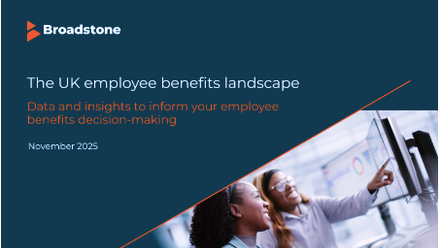Salary sacrifice: 5 ways to make your benefits budget work harder
With cost-of-living pressures still high, HR and reward leaders are under pressure to deliver more value from the same pot. Salary sacrifice remains one of the simplest tools to do just that - reducing tax and National Insurance (NI) for employees and employers and turning everyday benefits into a genuine win-win.
By exchanging part of their gross salary for non-cash benefits, employees lower their taxable income, keeping more money in their pockets. Employers also save on NI contributions, which can be reinvested into the benefits package or the bottom line.
So how can organisations make the most of this opportunity? Here are five practical steps to put salary sacrifice schemes to work.
Prioritise high-impact schemes
The starting point is to focus on benefits that employees genuinely value. Popular salary sacrifice options include:
- Pension contributions: one of the most tax-efficient uses of salary sacrifice. Both employees and employers save on NI, and some employers boost engagement further by reinvesting their NI savings into employees’ pensions.
- Cycle-to-work: still a strong performer, with almost two million employees having accessed bikes through the scheme since its launch. Employees typically save 25–42% on bikes and accessories, while organisations strengthen their sustainability credentials.
- Electric vehicle (EV) leasing: one of the fastest-growing benefits. EV salary sacrifice fleets grew 63% year on year, according to The British Vehicle Rental and Leasing Association. With Benefit-in-Kind (BIK) tax set at just 3% in 2025/26, employees can access new EVs at a significantly lower net cost than personal leasing.
- Holiday trading: increasingly popular as employees seek flexibility. Typically, it allows staff to buy annual leave, boosting satisfaction and generating NI savings for employers and employees.
- Technology schemes: Employees can spread the cost of laptops, tablets, and phones through salary sacrifice, saving NI while making the latest tech more affordable - particularly appealing to younger staff.
Every workforce is different, so it’s worth reviewing demographic and lifestyle data to decide which schemes will have the biggest impact.
Show the savings in real terms
Employees don’t always appreciate the financial advantages - and that can limit take-up. Clear, personalised modelling helps bring the numbers to life.
For example, a Tesla Model 3 at £500 per month could fall to around £350 net for a basic-rate taxpayer through salary sacrifice (The Electric Car Scheme). Similarly, a £1,000 bike could cost just £580–£720 depending on the employee’s tax bracket, thanks to cycle-to-work schemes.
Some organisations go further by embedding calculators into their benefits platforms, allowing staff to see instant, personalised projections. Others share employee case studies to make the savings feel relatable.
Link to wider business goals
Salary sacrifice works best when it’s positioned as part of a bigger picture. For example:
- Pensions underpin financial wellbeing and resilience.
- Cycle-to-work contributes to health, wellbeing, and sustainability goals.
- EV leasing supports ESG and net-zero commitments.
- Holiday trading reinforces a culture of flexibility and work-life balance.
By framing schemes this way, employees see the broader value, while leaders get a stronger case for investment.
Keep administration seamless
The biggest barrier to success is rarely employee interest - it’s administrative complexity. Payroll, HR, and line managers all have a role to play in ensuring schemes run smoothly.
Clear processes and regular training are vital. Payroll teams need to manage contracts and reporting correctly; line managers should be able to answer common questions. For more complex schemes, such as EV leasing, working with experienced providers can ease the burden.
A seamless experience builds employee trust and encourages participation.
Refresh and review regularly
Salary sacrifice shouldn’t be a “set and forget” benefit. Workforce needs evolve, as do tax rules and market trends.
Review uptake annually, gather employee feedback, and adjust your offering. Younger employees may initially be more drawn to tech schemes or Cycle-to-work, while later in their careers pensions or EV leasing may take precedence. Shifts in BIK rates or pension rules can also change the equation.
Regular reviews keep your salary sacrifice portfolio relevant, aligned, and impactful.
Stretching pay, strengthening value
Salary sacrifice may lack the novelty of the latest wellbeing app, but its impact is often greater. By lowering tax and NI, these schemes make everyday choices more affordable for employees, while freeing up savings that employers can reinvest.
For HR and reward leaders, the message is clear: now is the time to revisit your salary sacrifice portfolio. In a challenging economic climate, it’s not just a technical mechanism - it’s a strategic lever to boost engagement, resilience and retention, while making your benefits budget work harder.
Supplied by REBA Associate Member, Avantus
Flexible Benefits & Technology specialist providing online, highly configurable platforms to Customers and Intermediaries worldwide.








